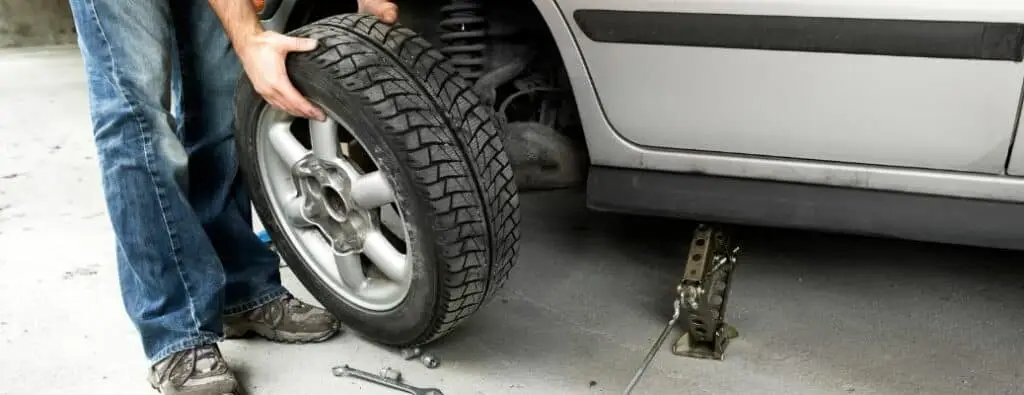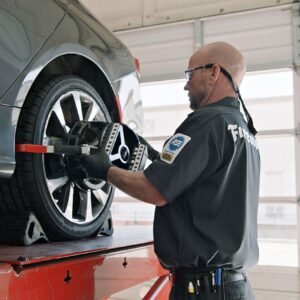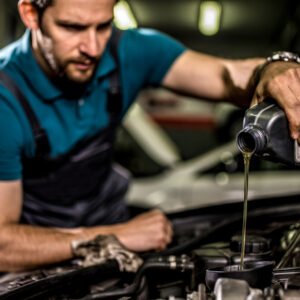Tire air pressure is one of the most overlooked aspects of vehicle maintenance, yet it plays a significant role in fuel efficiency. Incorrect tire pressure can increase rolling resistance, making your car work harder and consume more fuel. With fuel prices on the rise, maintaining proper tire pressure is an easy and effective way to cut costs at the pump. In this article, we’ll dive deep into how tire pressure impacts fuel efficiency and what you can do to keep your tires in optimal condition.
This article was prepared by the Watancar Motors Store team to provide valuable tips on tire air pressure and improving fuel efficiency
Why Low Tire Pressure Drains Your Wallet and Fuel Tank
When your tires are underinflated, they create more friction with the road. This additional friction, known as rolling resistance, forces the engine to use more energy to keep the car moving. This increased energy demand translates to higher fuel consumption. For example, driving on underinflated tires can lower your car’s fuel efficiency by up to 10%, which adds up quickly over time. Moreover, low tire pressure can also lead to uneven tire wear, costing you more in replacements. Checking and maintaining your tire pressure is one of the simplest ways to ensure you’re not wasting fuel unnecessarily.
The Surprising Impact of Overinflation on Your Tires
While low tire pressure is a common issue, overinflation also comes with its downsides. Overinflated tires can reduce the amount of rubber that makes contact with the road, leading to a harsher ride and less traction. This can compromise safety and result in uneven tire wear, forcing you to replace your tires more frequently. Overinflated tires can also make it harder for your vehicle to absorb road shocks, potentially damaging the suspension system. To achieve the best balance between fuel efficiency and safety, it’s crucial to maintain tire pressure within the manufacturer’s recommended range.
The Science Behind Tire Pressure and Rolling Resistance
Rolling resistance is the energy lost when your tires roll over a surface. Properly inflated tires minimize this resistance, allowing your car to move more efficiently. On the other hand, underinflated tires increase rolling resistance, causing the engine to work harder to maintain speed. This extra workload not only consumes more fuel but also produces more emissions, contributing to environmental harm. By maintaining the correct tire pressure, you can optimize your car’s performance, reduce fuel costs, and minimize your carbon footprint.
How to Check Your Tire Pressure Like a Pro
Checking your tire pressure is easier than you might think and can be done in just a few minutes. First, you’ll need a tire pressure gauge, which is available at most auto supply stores. Locate the manufacturer’s recommended tire pressure, usually listed on a sticker inside the driver’s door or in the owner’s manual. Remove the valve cap on your tire, press the gauge onto the valve, and read the pressure. If the pressure is too low, add air until it reaches the recommended level. If it’s too high, release some air. Regular checks, ideally once a month, can save you from unnecessary fuel expenses.
How Seasonal Changes Affect Tire Pressure
Tire pressure fluctuates with temperature changes. For every 10-degree Fahrenheit drop, tire pressure can decrease by about 1 PSI (pound per square inch). This means that during colder months, your tires are more likely to be underinflated, leading to reduced fuel efficiency. On the flip side, warmer weather can cause tire pressure to rise, potentially leading to overinflation. To ensure consistent fuel efficiency and safety, it’s important to adjust your tire pressure according to seasonal changes and always check it before long trips.
The Hidden Costs of Neglecting Tire Maintenance
Ignoring your tire pressure doesn’t just affect fuel efficiency; it can also lead to costly repairs. Driving on improperly inflated tires increases the risk of blowouts, especially at high speeds. Additionally, uneven tire wear can compromise your car’s handling, making it harder to control during sudden maneuvers. Over time, these issues can result in expensive repairs to your tires, suspension, and even your engine. By making tire maintenance a priority, you can avoid these hidden costs and keep your car running smoothly.
Fuel-Saving Tire Tips Every Driver Should Know
To get the most out of your fuel tank, start by investing in a high-quality tire pressure gauge and checking your tires regularly. Consider switching to low rolling resistance tires, which are specifically designed to improve fuel efficiency. Rotate your tires every 5,000 to 7,500 miles to ensure even wear, and always keep your tires aligned. Lastly, avoid carrying unnecessary weight in your car, as this can increase rolling resistance and decrease fuel efficiency. These simple steps can make a big difference in your car’s performance and your wallet.
How Technology is Making Tire Maintenance Easier
Modern vehicles are equipped with tire pressure monitoring systems (TPMS) that alert you when your tire pressure is too low. This technology takes the guesswork out of tire maintenance and ensures that you’re aware of any issues before they become serious. Some advanced TPMS even provide real-time pressure readings for each tire, allowing you to make adjustments immediately. Additionally, mobile apps and digital gauges are now available to help drivers monitor tire pressure more accurately. Embracing these tools can help you maintain optimal fuel efficiency with minimal effort.
The Environmental Benefits of Proper Tire Pressure
Maintaining the correct tire pressure isn’t just good for your wallet; it’s also good for the planet. Underinflated tires increase fuel consumption, which leads to higher carbon dioxide emissions. By keeping your tires properly inflated, you can reduce your vehicle’s environmental impact and contribute to cleaner air. For environmentally conscious drivers, this small habit can make a big difference. Studies show that proper tire maintenance can lower CO2 emissions by as much as 1.5 tons over the life of a vehicle.
Why Drivers Often Overlook Tire Pressure
Despite its importance, tire pressure is often overlooked in routine car maintenance. Many drivers assume that tires lose pressure only when there’s a visible puncture or leak. However, tires naturally lose air over time, even without any damage. Others might not realize how much improper tire pressure affects fuel efficiency and overall safety. By raising awareness about the benefits of proper tire maintenance, more drivers can enjoy safer, more efficient rides and lower fuel costs.
The Link Between Tire Pressure and Road Safety
Tires are your car’s only point of contact with the road, making their maintenance crucial for safety. Properly inflated tires provide better traction, braking, and handling, especially in adverse conditions like rain or snow. Underinflated or overinflated tires, on the other hand, can compromise these critical safety features. Regular tire pressure checks not only save fuel but also reduce the risk of accidents caused by poor tire performance. Ensuring your tires are in good condition is one of the easiest ways to protect yourself and others on the road.

How to Develop a Tire Maintenance Routine
Creating a tire maintenance routine doesn’t have to be complicated. Start by scheduling a monthly tire pressure check and make it a part of your regular car care habits. Pair this with routine inspections for visible damage, such as cuts or bulges. If your car is equipped with a TPMS, pay attention to its alerts and act promptly. Finally, incorporate tire rotation and alignment into your service schedule. By developing these simple habits, you can extend the life of your tires, improve fuel efficiency, and enhance overall driving safety.
Final Thoughts: Small Habits, Big Savings
Maintaining proper tire pressure is a small habit with significant benefits. From saving money on fuel to reducing emissions and improving safety, this simple task has a far-reaching impact. Whether you’re a daily commuter or a long-distance traveler, taking the time to check your tire pressure can pay off in more ways than one. With the right tools and a proactive approach, you can ensure your tires stay in top condition and your car performs at its best. Don’t underestimate the power of proper tire maintenance—it’s an investment in both your vehicle and your wallet.
Discover how oil additives for road trips enhance performance and protect your engine on long drives. Click here for expert tips!





